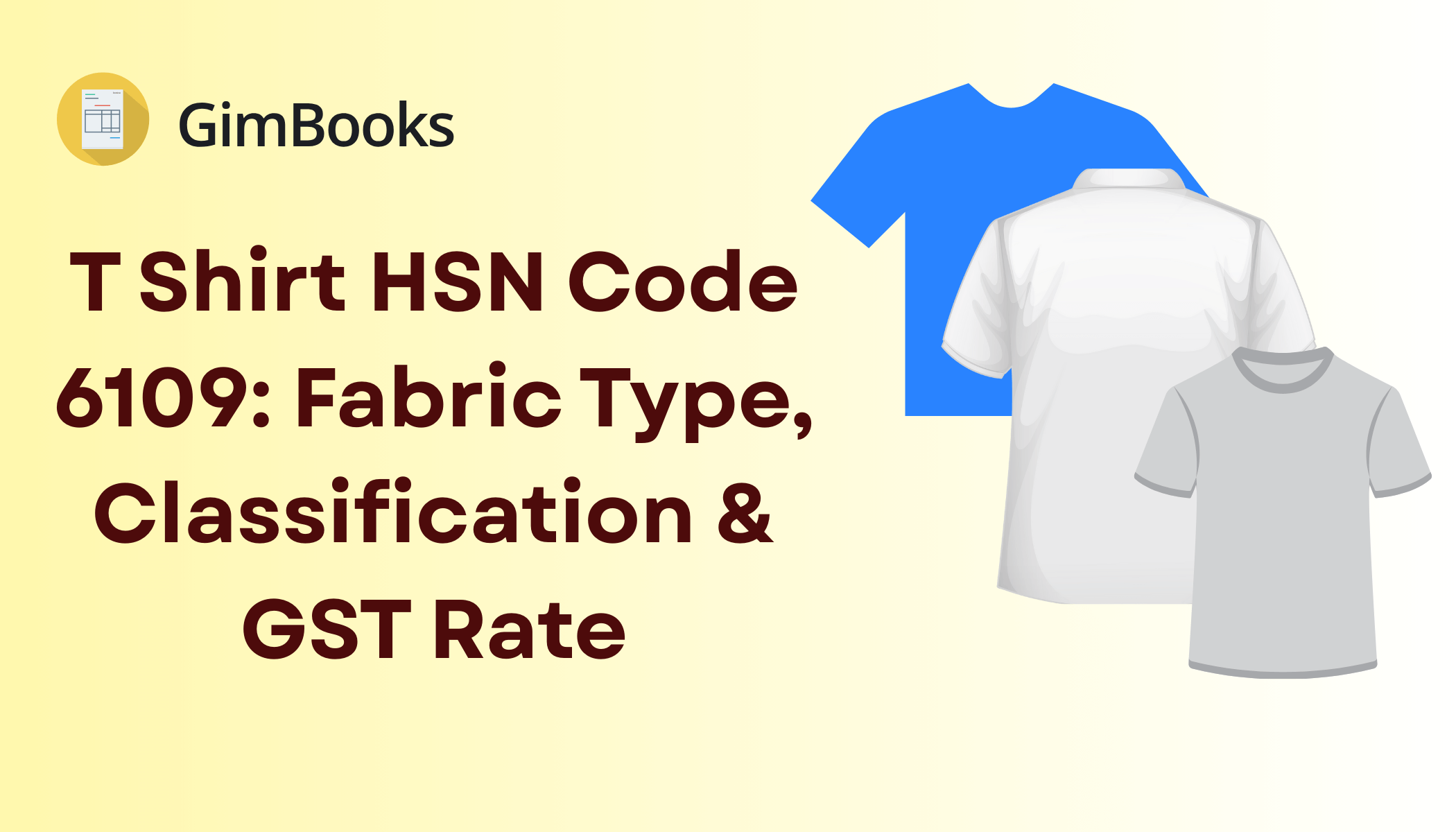Boy's Suits & Garments – GST Rate and HSN Code 6203

What is HSN Code 6203?
HSN Code 6203 refers to “Men’s or Boys’ Suits, Ensembles, Jackets, Blazers, Trousers, Bib and Brace Overalls, Breeches and Shorts (other than swimwear).” This code is crucial for apparel manufacturers, wholesalers, e-commerce sellers, and retailers dealing in ready-made men’s and boys’ woven garments—from officewear to ethnic sets, including handloom and khadi variants.
GST Rates & Exemptions for HSN Code 6203
Garments under HSN 6203 carry either a 5% or 12% GST rate, depending on the item’s sale value. The GST on each piece is charged as follows:
- 5% GST: Garments or apparel (per piece) sold for less than or equal to ₹1,000.
- 12% GST: Garments with a sale price above ₹1,000 per piece—including suits, jackets, trousers, and branded items.The rules are the same for all textile types—wool, cotton, synthetic, silk, and special handloom/khadi categories.
Table Notes
- GST rates are per item, not per bill value.
- Sale price excludes GST. For combo sets or ensembles, each item is considered per its own ex-GST price.
- The below table summarizes rate application for key garments and textile types in HSN 6203.
GST Rates Applicable Under 6203
What’s Included in HSN 6203 Garments?
The code covers men’s and boys’ woven clothing—formal suits, officewear, blazers, ethnic jackets, shorts, trousers, overalls, khadi/handloom outfits, and more. It is used for both Indian and imported apparel, regardless of whether sold via traditional retail, e-commerce, or wholesale channels.

Explore Gimbooks HSN/SAC code & GST Rate finder
Key Exemptions Under GST for Garments
There are no outright GST exemptions for garments under 6203, except for producers or retailers below the aggregate registration threshold (currently ₹40 lakhs turnover per annum, or ₹20 lakhs in special category states). Handloom and khadi products, while enjoying special incentives, follow the same GST regulations as other fabrics.
Input Tax Credit (ITC) Rules for Garments
ITC can be claimed by GST-registered apparel manufacturers, wholesalers, and retailers on inputs and input services if supplied with GST-compliant invoices. Businesses selling at both 5% and 12% rates should maintain careful credit documentation, as ITC for goods taxed at 5% is subject to restrictions per latest government updates.
GST on Apparel Billing: Practical Scenarios
- A cotton suit sold ex-GST at ₹950 per piece is billed at 5% GST; above ₹1,000, 12% applies.
- Retailers combining two trousers in one carton must assess GST on each individual item’s price, not the combined total.
- Manufacturers exporting jackets can claim ITC on raw materials used for producing export garments.
Common Mistakes in Garments GST
- Calculating GST on the invoice total instead of item-wise price.
- Billing 5% GST on ₹1,000.01 and above garments, when 12% must apply strictly above ₹1,000.
- Claiming ITC on purchases for 5% GST outward supply (verify against latest circulars).
- Incorrect HSN selection for new blends or nonstandard textiles.
Conclusion
HSN Code 6203 sets clear GST rules for men’s and boys’ woven garments in 2025. Apply 5% for affordable wear up to ₹1,000 per item and 12% for premium/bulk sales, and always use item-wise billing for compliance. Keeping documentation up to date and maintaining HSN accuracy will ensure smooth GST credit and audit readiness in the garments industry.
Also explore


FAQs: HSN Code 6203 & Garments GST
What is HSN 6203?
It classifies suits, ensembles, jackets, blazers, trousers, shorts, and similar woven garments for men and boys.
What are the GST slabs for HSN 6203?
5% if item is up to ₹1,000 per piece (ex-GST); 12% if above ₹1,000, regardless of fabric or brand.
Can ITC be claimed on garment GST?
Yes, eligible businesses can claim ITC on input purchases with GST-invoicing, subject to government restrictions for goods taxed at 5%.
Are there exemptions for handloom/khadi clothing?
No, handloom and khadi products are taxed the same as other textiles under 6203 if price exceeds the exemption or registration threshold.


